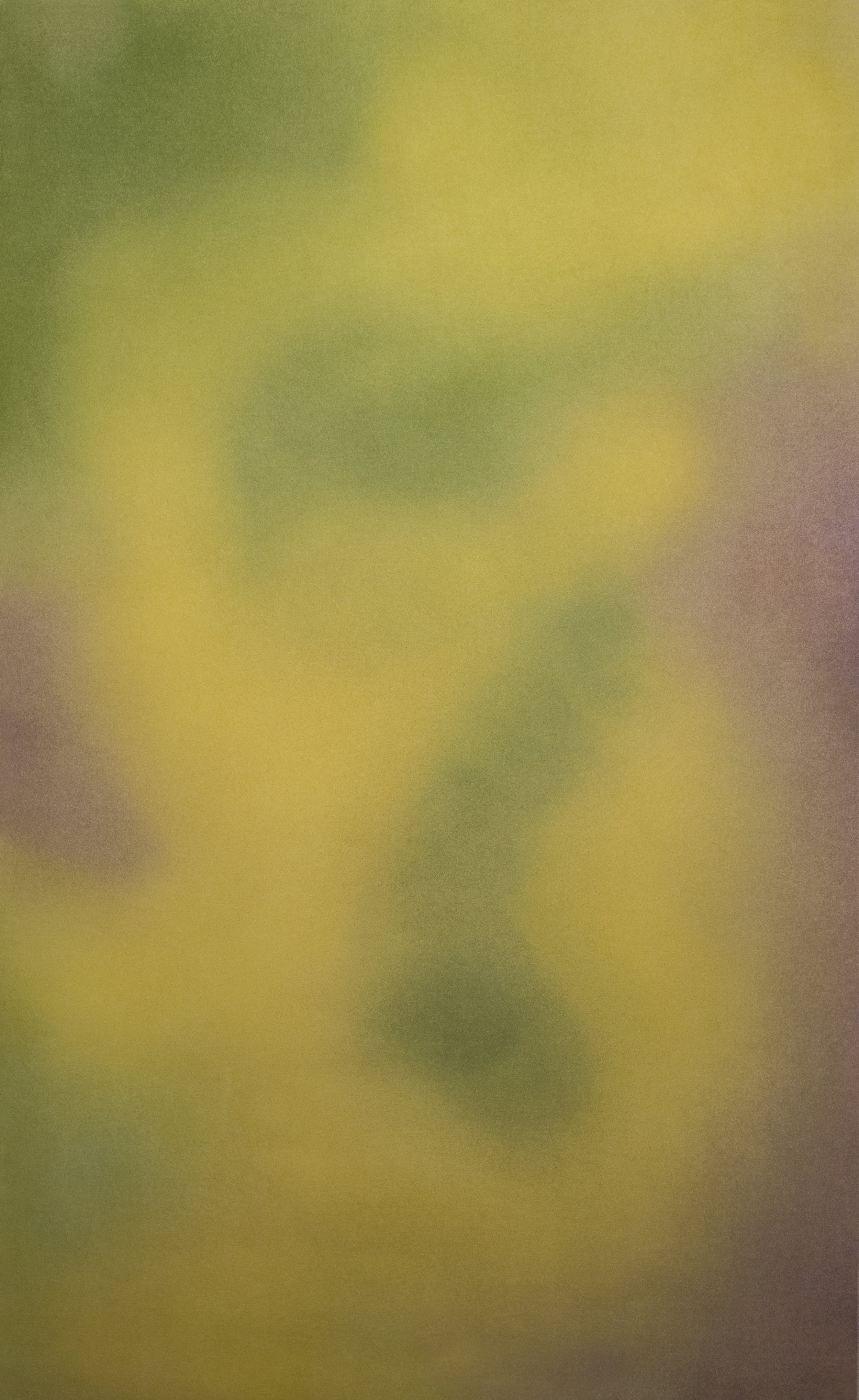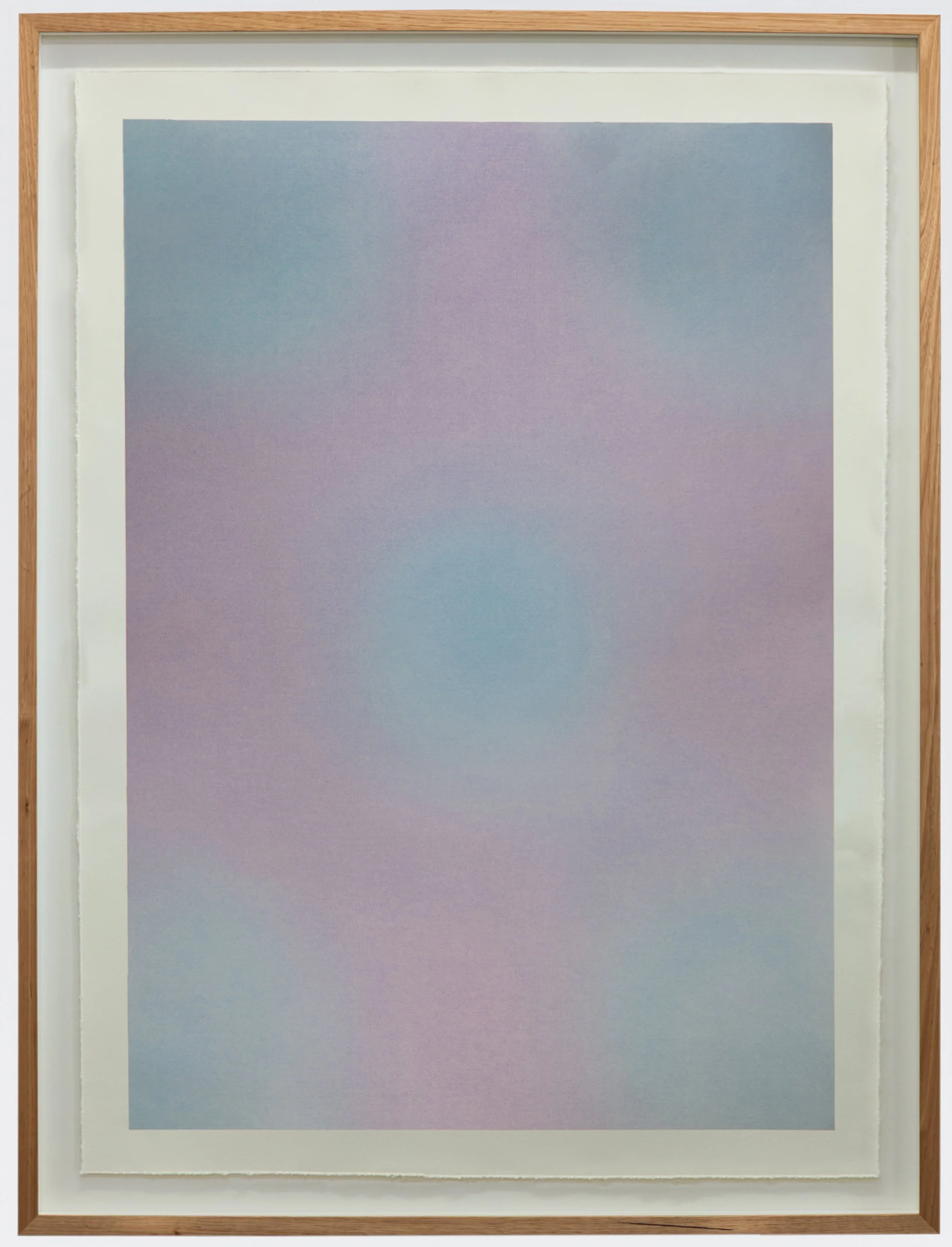SEASONS
the phenology of seasons
•
Each artwork in this 12 month long quadriptych series explores the phenology of the four meteorological seasons - Spring, Summer, Autumn, Winter.
Phenology studies the natural phenomena relating to the rhythmic biological nature of events. In this series, phenology merges with wave and vibrational phenomena, known as cymatics; where biodata (electrical conductivity) is recorded from the botanicals at the time of each respective season, are sonified into frequencies with the emergent patterns fixed to paper.
The biodata is transposed into resonant low frequencies via a digital audio workstation. These frequencies are then amplified through a low-frequency vibration generator beneath paper, imbuing fine raw pigments into a state of perceived automatism upon the paper. The emergent patterns that reveal themselves through this process, are governed by a naturally occurring phenomenon known as cymatics - the occurrence of sound made visible - where nodal and antinodal patterns are shaped by resonance and vibration. The autonomous mark making of pigments and crossover patterns reveal an abstract impressionistic landscape; a nod to the source itself.
In processing the sonification inherent in botanicals, and using that biodata to autonomously “paint” resonant patterns, we can view this work as a generative instance
Furthermore, the movement and rhythm recorded from the botanical is determined by the chemistry of the plant, as well as environmental factors (temperature, time of day): these parameters allow the form to emerge - nature is the algorithm.
To set the image, for hours my kabuki brush swirls the emergent patterns of pigment into the paper, rendering a gaussian blur as each colour graduates into the other. I enjoy the physicality and meditative surrender as I trace the made marks into lush gradients with my brush, with full trust in the guidance from its source.
Spring - wisteria + anenomes
Summer - dahlias
Autumn - marigolds
Winter - forget me not
I view the work as an intimate collaboration between nature, its hidden intrinsic energetic code, and myself.
The first seasonal node, ‘Spring’, debuted at the Unit London “Uncomputer” exhibition, on October 4th, 2023, and was subsequently acquired. The exhibition is supported by a critical essay “Forms from Chance” (penned by curator Malte Rauch)
The second seasonal node, ‘Summer’, was released on 23 January 2024. It was recognized as a finalist for the Arab Bank Switzerland Digital Art Prize and was subsequently acquired by the bank for their collection
The third seasonal node, ‘Autumn’ debuted at ‘THE PATH TO THE PRESENT, 1954–2024’ from July 2 - August 10, 2024, on the occasion of the GENERATIVE ART SUMMIT by Foundation Herbert W. Franke. The exhibition curated by Anika Meier showcased artists from different generations, from the early 1950s until today, working in the field of generative art and AI. Artwork acquired
The fourth seasonal node, ‘Winter’ was acquired by the Anne and Michael Spalter Digital Art Collection, one of the world’s largest private collections of early computer art, comprising works from the second half of the twentieth century to present day.
•
SPRING [SOLD]
dry pigment on Hahnemühle etching paper, 80cm x 120cm (31.5 x 47in)
Spring, dry pigment on Hahnemühle etching paper, 80cm x 120cm (31.5 x 47in)
BTS, Spring, 2023
SUMMER [SOLD]
dry pigment on Hahnemühle etching paper, 80cm x 107cm (31.5 x 42in)
Summer, dry pigment on Hahnemühle etching paper, waxed Tasmanian Oak Frame with Ultravue Glass, 82cm X 110cm (32 x 43.3in)
BTS, Summer, 2024
AUTUMN [SOLD]
dry pigment on Hahnemühle etching paper, 80cm x 107cm (31.5 x 42in)
Autumn, dry pigment on Hahnemühle etching paper, waxed Tasmanian Oak Frame with Ultravue Glass, 92cm X 122cm (36 x 48in)
BTS, Autumn, 2024
WINTER [SOLD]
dry pigment on Hahnemühle etching paper, 80cm x 107cm (31.5 x 42in)
Winter, dry pigment on Hahnemühle etching paper, waxed Tasmanian Oak Frame with Ultravue Glass, 92cm X 122cm (36 x 48in)
BTS, Winter, 2025
Artist Notes:
I often turn to the natural world as a source of influence; nature inherently contains generative and algorithmic systems, from the fibonacci sequences in leaf arrangement of plants and shell structure, to cymatic patterns observable in sound and vibration, to murmurations in both birds and fish, to lissajous curves realized through gravity… as an artist my challenge is to somehow build a practice methodology around these systems to make them quantifiable and actionable.
The frame of thinking that artworks can be ‘generative, by nature’ was a phrase first introduced to me by Misha de Ridda in his series of the same name, and a fantastic resource to refer to has been Peter Bauman’s editorial historic survey of generative art on Le Random, which posits the lineage of generative art today brewing from many developments in mathematical and algorithmic discoveries since the pre-modern era (from c. 70,000BCE).
My work attempts to hone in on the premise that art can be generative by nature - adopting ecological systems and rule-based processes as a collaborative framework. While generative art is often associated with computer-based systems, I found lasting resonance in Philip Galanter’s 2003 essay Generative Art Theory (see: Chapter 5: Generative Art Theory from A Companion to Digital Art, First Edition, 2016, edited by Christiane Paul), on what defines generative art today, detaching the synonymously intertwined “computer art” and “generative art” from one another; generative art is
“any art practice where the artist uses a system [...] computers did not pave the way for generative art; generative art helped to pave the way for computers”.
I am catching the ball he is throwing.
As early as the 15th century, Leonardo da Vinci observed the dust on a table when struck “descends from the hypotenuse of these hillhocks… and raises again”.
Following this, in 1632, Galileo Galilei observed the formation of patterns made on a brass plate as he was scraping a sharp iron chisel upon it, when it emitted a resonant high pitch hissing noise and saw “a long row of thin lines, parallel to one another and at exactly equal distances apart”
In 1787 Ernst Chladni illustrated and published the generative patterns that were made by striking a bow on brass plates. His wonderful diagrams are to be found in Entdeckungen über die Theorie des Klanges (Discoveries in the Theory of Sound). In his book, he demonstrates the technique which consists of drawing a bow over a (circular, square, or rectangular) plate or membrane whose surface is lightly covered with sand. When stroked, a given plate will resonate at one of its natural frequencies. The sand bounces about on the plate until settling at nodal points (areas of zero movement) thereby producing intricate patterns. These patterns are now called Chladni figures, are is the theory I recall in my Seasons series.











